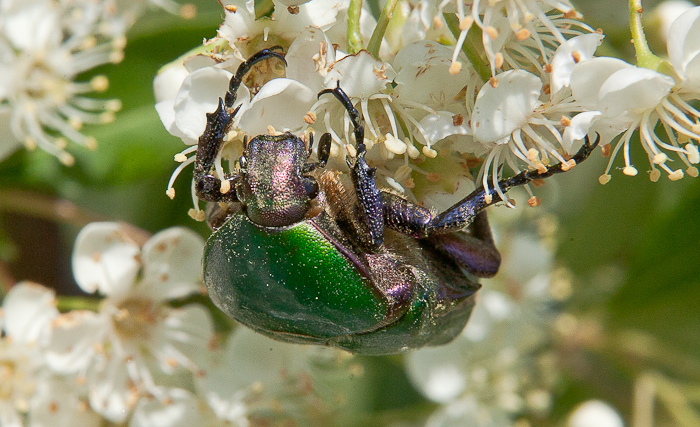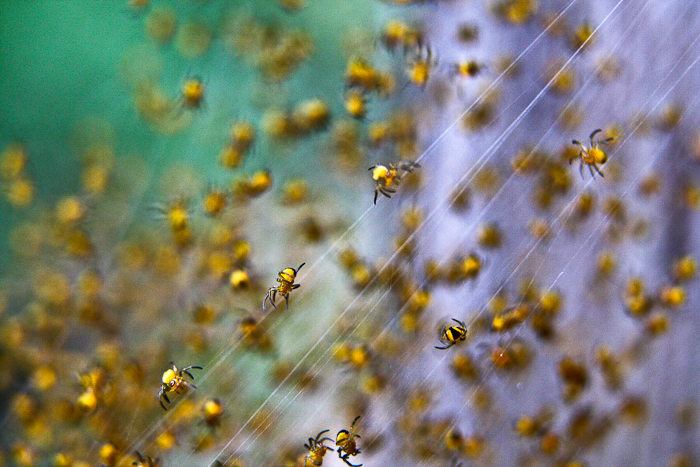Rose chafer

In late May, the pyracanthus ‘Soleil d’Or’ in our garden in Tuscany was in full bloom and alive with insects. Among the invading horde buzzing around me as I approached with my camera was this vivid green beetle who was feasting in delight on the abundance of delicious pollen. It was fascinating to watch it and its companions making their way among the flowers, with legs sticking out in all directions grasping a petal here and a leaf their in order to maintain balance. He is called a rose chafer (Cetonia aurata), the distinctive feature being the small triangular area between the wing cases just below the thorax.
According to Mr Wikipedia, ‘rose chafers are found over southern and central Europe and the southern part of the UK where they seem to be sometimes very localized. They are a very beneficial saprophagous species (detritivore), their larvae are the insect equivalent of earth worms and help make very good compost where they are often found in great numbers.’
Canon 1DMkII with Canon 70-200mm f4L IS lens at 70mm and Canon EB12 tube; ISO400 f16 1/320. Cropped and adjusted in Lightroom
[socialring]



